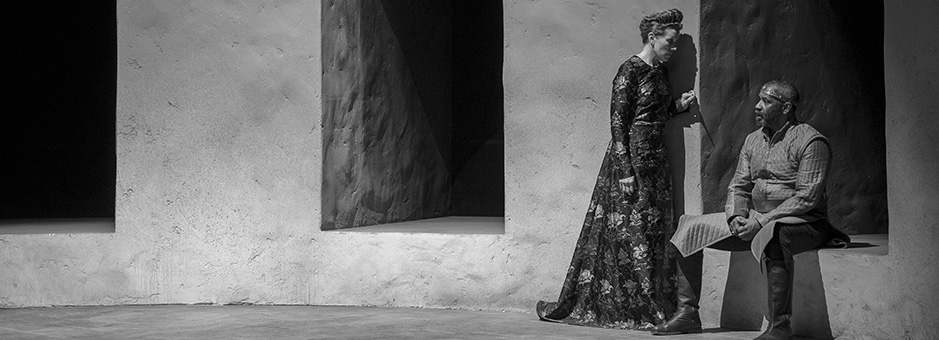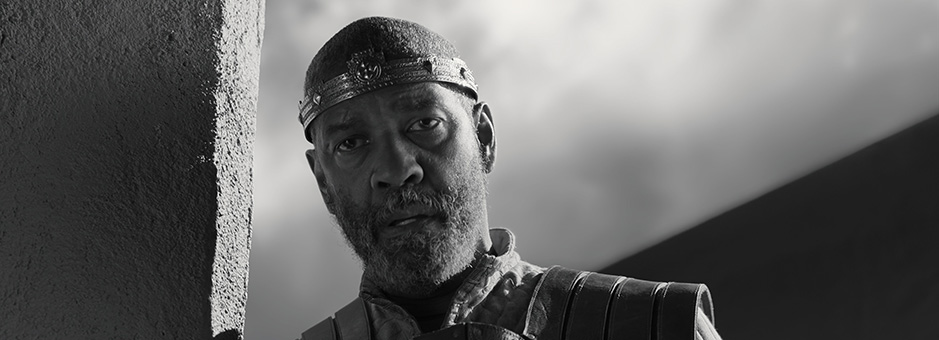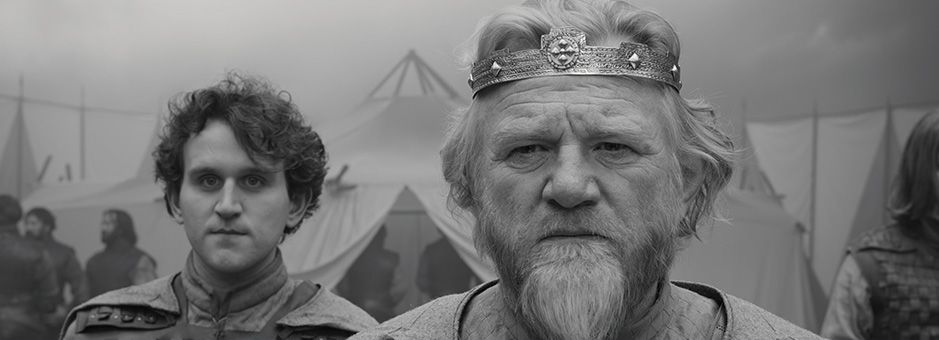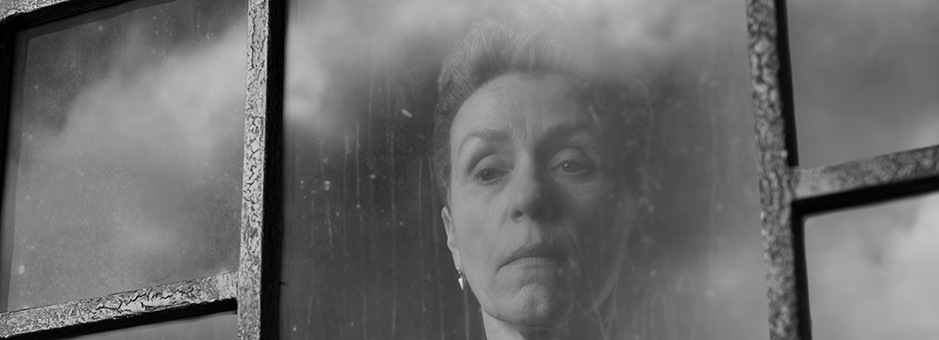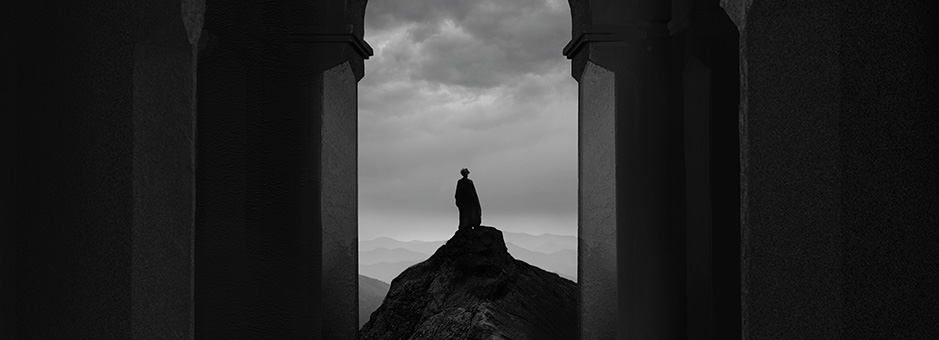Case Studies
Manipulating light and shade for The Tragedy of Macbeth
The Tragedy of Macbeth is the first solo directorial project for Joel Coen, with photography by five-time Oscar nominee Bruno Delbonnel. Based on the play Macbeth by William Shakespeare, this tale of murder, madness and ambition stars Denzel Washington and Frances McDormand.
The film has received critical acclaim for its direction, cinematography, and the performances of its cast. Here we talk to Supervising Colourist, Peter Doyle, about his role in achieving the look of this stunning film.
You’ve previously worked on two features with the Coen brothers. Working just with Joel on this project, was the workflow and method different or quite similar?
The process was similar, but the capture was different this time: Inside Llewyn Davis was shot on film, The Ballad of Buster Scruggs was captured on the ARRI ALEXA while The Tragedy of Macbeth was shot on ARRI LF.
The mix of locations and sets was very different each time, too.
When was the choice of filming in black and white made?
Joel made the decision while he was working on the adaptation of the play.
How did you decide on the look of the movie? Did Joel Coen and DoP Bruno Delbonnel gave you any old movie or other references?
Joel is extremely gracious in explaining the story and the beats, and is descriptive rather than prescriptive. There would be specific notes on occasion, but typically we would be asked what we could do with the grade to help drive the story.
Bruno is very eloquent at describing his concepts for light. His most used word was grey – it was all about reproducing a grey scale.
The film references we discussed were Dreyer’s The Passion of Joan of Arc, Laughton’s The Night of the Hunter, and David Lean’s Oliver Twist. Most discussions, when not about the characters and the film, were about architects working with minimalism and artists who work with light; for example, Tadeo Ando, Shigeru Ban, James Turrell and Robert Irwin.
During the preparation stage the words most used were ‘stark’ and ‘minimal’, and I translated that as no film grain, no flares, no retro artifice – which was somewhat counter to expectations given the film has a 1.33 B&W presentation.
How did you prepare yourself for the project, and at what point did you get involved with it?
I got involved once Bruno came onboard. We went into the film planning to use the ARRI B&W sensor, but the need for blue screen forced the move to the ARRI colour sensor instead.
Plus, whilst the purity of a purely B&W originated image was appealing, I was concerned that Bruno and Joel would be locked into how the sensor would render the skintones. And also, that any changes to the image other than tone scale would require roto, which for me worked against the stark and minimal mantra.
To prepare, I set up my own test shoots with matching phase one achromatic and tricolor medium format digital backs using UV, IR and normal light, with black- and white-skinned models and a box full of all the classic B&W filters. This showed what would be needed to match a colour sensor to a B&W filtered capture, and for Bruno and I to have a language and a reference for the grade.
How did Baselight help you achieve the look? How did you translate Macbeth's tortured inner thoughts into your grade?
It sounds obvious, but there is no achromatic DCI projection or streaming. We ultimately were delivering a very desaturated file, meaning it became all about managing white points. Using the mastering colour space and white points, we were able to maintain the same B&W across the D60 for DCI, D65 for HDR, and D65 for Dolby Vision laser projection.
By moving on to Baselight 5.3 we were able to remove all LUTS from the pipeline, which gave an amazing, almost 3D quality to the image. We were able to completely control the coldness or warmth of the B&W and modulate the colour temperature across scenes. It’s extremely subtle, but we made interiors cold and day exteriors warm, but still as B&W.
To convert colour to B&W, I had Björn Ottosson’s Oklab built as a shader for Baselight by Eric Horwitz at PostWorks NYC. This allowed us to move the contrast filters that Bruno would have used in front of the lens, to an emulation in the grade post shoot. We built a custom ‘button’ that allowed us to fade from ghostly infrared-style B&W, straight to vintage tintype photography style.
How was the colour and light approached on set?
Bruno shot everything using ARRI LF at 3200K, but had all the moving lights rated at 6000K. This meant the light was saturated with blue, which helped us to further modulate and control it when playing with the blue layer in the grade.
How did you create the diaphanous look for the white fog?
The fog was partially shot on set, and created by Alex Lemke, our VFX Supervisor. Fog and smoke were used throughout the film as a device to fade between scenes, but also to reveal characters, for example, the three witches. To control and balance it, we agreed with VFX to deliver images as multichannel EXR files with up to four layers of fog.
The movie is at the border between film and theatre; did that influence your grade?
Whilst the film is extremely theatrical, it is still a Joel Coen film. We approached the grade exactly as we approached his previous movies. This possibly allowed us more room to add painted shadows, and to modulate density changes.
What was the most challenging part of the project?
Monitoring. Some scenes with low contrast grey are torture tests for the monitoring – from the shading of the xenon, to the banding of the x310s, to the metamerism of the laser projection.
We had to manually tweak the laser projection used for the BFI London premiere to match the xenon projector for the NYFF premiere.
How long did you spend on the grade?
COVID broke everything. I had a few weeks prep in LA before the shoot, then Mel Kangleon handled dailies on Baselight in Burbank until the shoot was shut down for a few months because of the pandemic. Once production started again in Burbank, we handled dailies out of London due to the travel restrictions, then we finished the final grade at Postworks in NYC. So all up it took about two years, off and on.
What projects are you working on at the moment?
I’m starting prep on a feature for MGM and Bruno Delbonnel’s new project, as well as finishing a feature for New Line and a series for Starz – and a super-secret project to be released at end of 2023.
“Joel is extremely gracious, and is descriptive rather than prescriptive. There would be specific notes on occasion, but typically we would be asked what we could do with the grade to help drive the story.”
Download
Related Links
British Cinematographer: Behind The Scenes – The Tragedy Of Macbeth (PDF)




